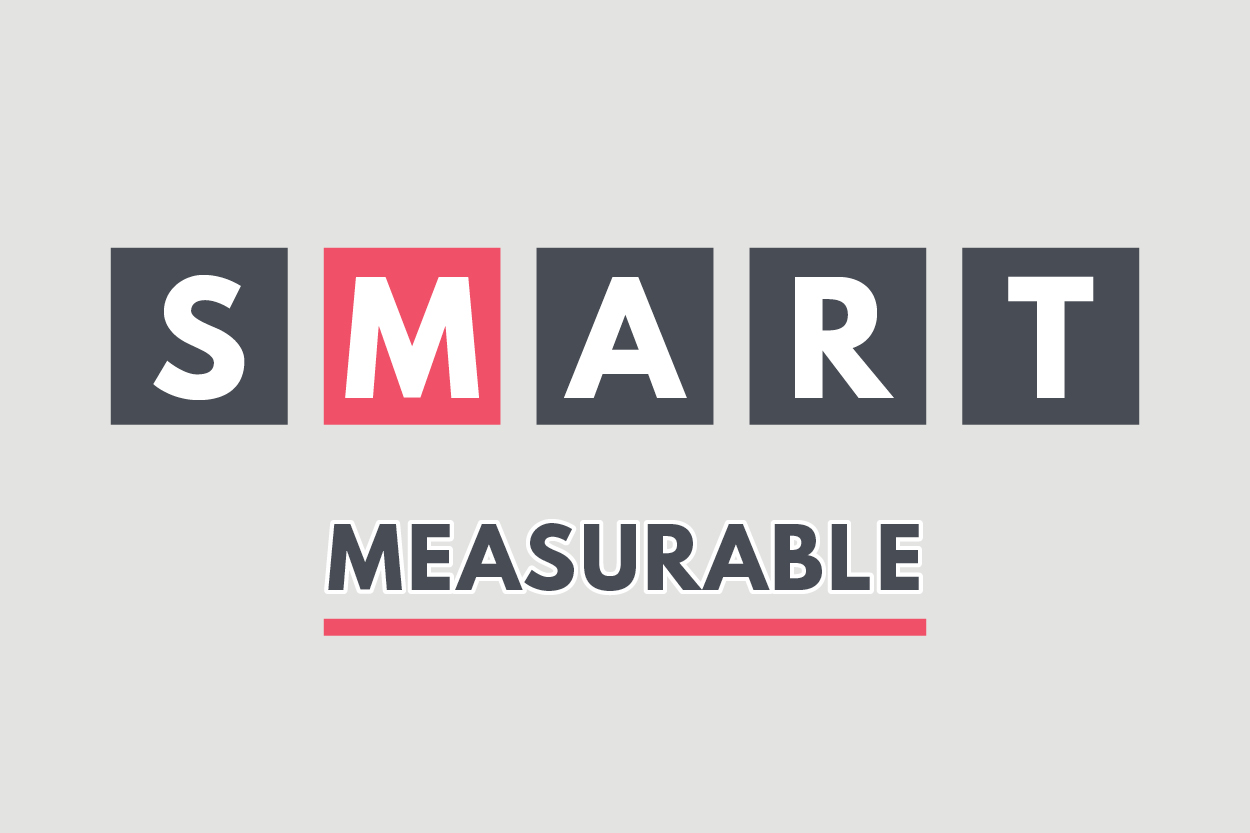Back to Basics: How to set SMART objectives

- 21 September 2020
Tasked with setting and meeting objectives that deliver? Here’s what you need to know.
Increasingly, marketers are expected to be the voice of the customer and the barometer of what’s reasonable. Defining what's reasonable comes into every marketing objective you design, by being specific, measurable, achievable, relevant, and timed. SMART.
The SMART acronym was first used in 1981 in an edition of Management Review, attributed to George Doran and available here at MIS. Interestingly there the 'A' meant 'assignable', but as we consider these team efforts now A is taken to be 'achievable'. Which probably explains the lack of consensus on what each letter should be.
Previously on the Content hub, we have explored some of the marketing fundamentals behind creating a marketing plan and a social media campaign. However, these big ideas are only possible by having basic strategies in place that allow plans to be flexible to change because - sadly - no marketer gets it right every time, first time.
Because every business plan has a goal the company wants to reach, it’s the marketer’s job to break this into coherent objectives that can evaluate whether an activity has been successful or not. An example of a SMART objective is to generate an extra £10,000 of revenue from a new product launch by the end of Q4.
In this article, we’ll use this example to take you through step by step exactly what makes a SMART objective, and why they’re so important.
Skip to the end to find out what SMARTR means, which you might have seen in other posts or course content.
What does SMART stand for?
A SMART objective is:
- Specific
- A set quantity result. Followers, revenue, signups etc.
- Measurable
- You have the tools necessary to measure it
- Achievable
- The market and business performance support it
- Relevant
- The business benefits and you can do it
- Timed
- Also called 'timely' or 'time-bound'. Has a set time to end
An example SMART objective
Objective: Generate an extra £10,000 worth of revenue from a new product launch by the end of Q4.
How is this objective Specific?
Though it is a simple example, this objective is specific to generating £10,000 in revenue from a new product launch. The number is the important bit to make it specific.
Of course, on a far greater level, the specific nature of any objective must apply to the wider business. No objective is set in isolation from the long-term aims of the business, in fact, it must be an extension of the overall strategy of your organisation. This ties in with relevance.
CIM members can hear more about this by accessing a variety of resources on setting a marketing strategy via Marketing Expert, through their MyCIM account.
What would happen if it wasn't specific
You'd never know if you achieved it or not, and thus what to do differently/the same next time.
How is this objective Measurable?
If revenue isn't measurable in your company, you may have a problem. So, to make this objective measurable, we'll be looking for revenue.
However, we've also said that it must be from a new product launch. In choosing an objective like this, you have to make sure your CMS systems are set up for accurate attribution of sales. Every sale of this new product must lead back to this objective, so just make sure you're tracking everything correctly as the best marketers do.
What would happen if it wasn't measurable
You'd be fighting for attribution and credit in your end-of-year review. Or your boss will be asking why you spent your marketing budget on anything.
How is this objective Achievable?
Let's pretend this new product costs £100. We've then only got to sell 100 of them to make that lofty £10,000 target, which feels pretty achievable. If the product costs £10, we've got a lot more work on our hands, but whether an objective is achievable is down to you, and your company's circumstances.
If you've never made £8,000 from a product launch, it's unlikely you'll make £10,000 suddenly now. This number hasn't been plucked out of thin air. It must consider your previous targets, previous revenues and, perhaps most importantly, your budget.
Objectives must be SMART precisely because they take into account the company and market as it stands, not as we would like it to be.
Also, note that while it's easy to be achievable, don't make it too easy for yourself either. Otherwise, your boss will think you aren't trying hard enough.
What would happen if it wasn't achievable
The clue's in the name - you won't achieve it. Which is demotivating from start to finish, and it's an uphill battle all the way
How is this objective Relevant?
Relevant here is meant to refer to being 'relevant to your team', but it's good to think of it as 'relevant to the business' too. Marketing doesn't make new products (though it should have a say), but it does launch them, so this objective being tied to a new product launch is what makes it relevant.
The business has developed a new product, so will be interested in seeing revenue being generated by a launch. So it's relevant to the business too.
You may have also seen the R of SMART being taught as 'realistic' - we even mention it in one of our course podcast clips. But in those cases, it's taken to mean 'realistic for your marketing team', that you have the tools to succeed. In other words, relevant for you.
What would happen if it wasn't relevant
If it isn't relevant, what's the point of doing it? Can you even do it?
How is this objective Timed?
This final element of your SMART objective relates back to something that we all must deal with: deadlines. If you have an essay due, you’ll have a date to hand it in by. If you have an objective to complete, you need a date to complete it by - it really is that simple.
In the example we have used, it's time-bound as we need to increase revenue by an extra £10,000 before the end of Q4, which gives a specific timeframe. Without these deadlines, your objectives are not SMART, and your activity may not generate maximum impact.
Having these timelines also motivates you and provides structure to your overall plan. If you have to be finished by the end of the year, you know you need staged activities leading up to it.
It's also timely, based on the different definition: it's related to a new product launch, which is happening right now.
What would happen if it wasn't timed
You'd keep driving for that target forever, or go mad trying to achieve it within days. Know when to stop, and when to drive activity.
What is a SMARTR objective?
Specific, Measurable, Achievable, Relevant, Timed, Recorded.
The second R is for Recorded
Sometimes you'll see SMART extended to SMARTR. This element, relatively easily achieved, is recording the objective when given to a team member or your boss. Get it in an email, or written down in your performance management software.
That way when you're checking how the objective is doing, everyone knows what it was.
What would happen if it wasn't recorded
It might not happen the way it was meant to, as memories are fallible. And if you leave before the objective is complete, no one can pick up where you left off.
But remember, these are just the basics. This article is a precis of the comprehensive material you can find on CIM’s member-only Marketing Expert site, where members can find a host of comprehensive marketing material, resources and tool kits.
To access these resources and more, become a member of the Chartered Institute of Marketing today for as little as £15 a month. Your membership will give you access to career-enhancing content, including templates and practical guides, as well as a global marketing community through events and networking.
More members-only marketing resources:
How to build a resilient strategy (member-only)
Fundamentals of marketing (member-only)
Building a brand strategy (member-only)
Setting objectives (member-only)

Tags:
- 0 views

 FAQs
FAQs
 Log in
Log in
 MyCIM
MyCIM












